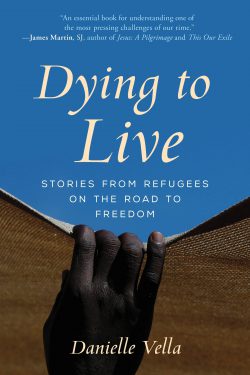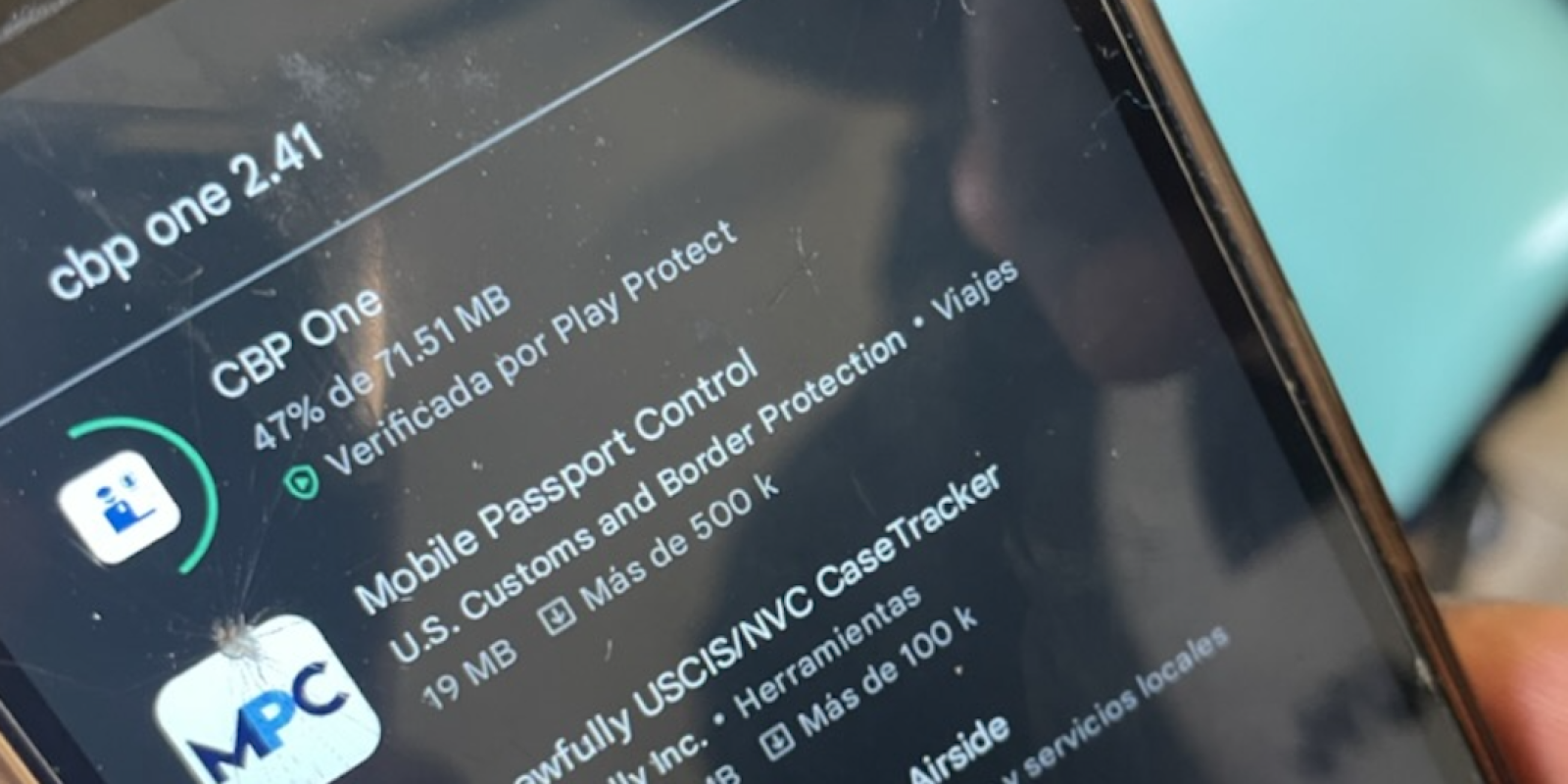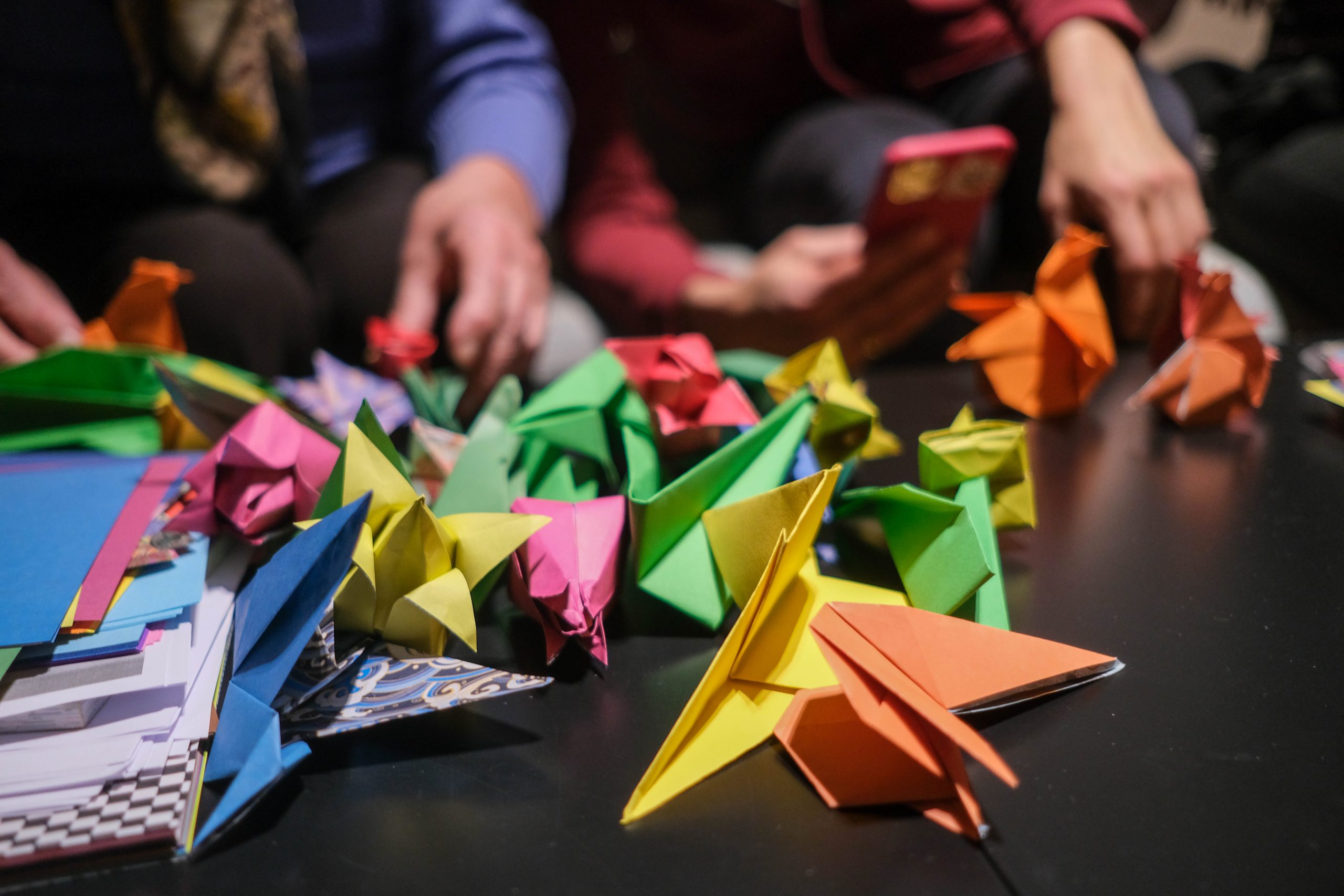 Dying to Live: Stories from Refugees on the Road to Freedom, a new book co-published by Jesuit Refugee Service, gives the very personal stories of people who have been forced to flee their home and seek a better life. The stories are moving and often heartbreaking and provide a personal view of the larger issues of forced displacement we face today.
Dying to Live: Stories from Refugees on the Road to Freedom, a new book co-published by Jesuit Refugee Service, gives the very personal stories of people who have been forced to flee their home and seek a better life. The stories are moving and often heartbreaking and provide a personal view of the larger issues of forced displacement we face today.
The book can help you engage a group at your school, parish, or community in a discussion about refugees and forcibly displaced people, and our discussion guide can help.
While some of these questions may serve for group discussion, others may be for your own personal reflection.
Opening:
Before you begin your discussion, reflect on the phrase, “Dying to Live.” What does that mean to you? What is an image or experience that comes to mind?
Part I: Flight
- Nabeel, a refugee from Pakistan who now lives in the United States, is quoted saying, “I say there is a difference between just surviving and living. Animals survive, eat, hunt, do their thing, but living is different.” (Pg. 5) What other stories from the book express a similar theme? What does it mean to survive? What does it mean to live?
- The author states, “Our story is about our identity…” (Pg. 5) Do you agree with this statement? How have these stories shaped the identity of the people featured throughout the book? How has your story shaped your identity?
- Adil is quoted saying, “My grandfather used to tell me that if you tell the truth, you pay a price. Truth has a price.” (Pg. 16) Does truth have a price? What price have refugees paid to live their truth?
- The story of Martin highlights the tragedies refugees too often face. Faced with the unimaginable, the author states, “Martin remains a good and gentle young man. The biggest tragedy is that his belief in this essential goodness in himself has been destroyed.” (Pg. 25) How does this story resonate with you?
- The author highlights throughout Part I the trauma that refugees carry. Daoud is quoted saying, “My side still hurts, and when I feel it I instantly remember my past, all my life, what happened to me.” (Pg. 28) Although refugees may find refuge, how often do we realize the trauma experienced and the need for it be treated?
- One man from Syria is quoted saying, “I’m trying to explain why I left but it’s difficult: feeling and meaning, my friend, you know?” (Pg. 35) Why does our society expect refugees to give a clear answer when it comes to why they left? Does the process of admitting refugees consider that refugees are still processing why they left?
- The story of Salma (Pg. 39) highlights the story of many refugees – they never wanted to leave their home. How can we respond more compassionately to refugees and the forcibly displaced, especially when knowing that many long for the home they left?
Part II: Journey
- The journeys refugees take are incredibly difficult. As said by Mariam from Syria, “[The journey] was very hard. That’s why I remember the details.” (Pg. 46) When you hear stories in the news of refugees on the move, do you consider the difficulty of the journey and the trauma experienced? Does this consideration form our asylum and immigration policies?
- The story of the Good Druze (Pg. 48) is a modern-day Good Samaritan. How can we show the same compassion? What is holding us back?
- Amadou from Guinea says that, when referring to his journey across the Mediterranean from Libya, “I am here [in France] because the good God wants me to be here. I could have died.” (Pg. 55) How does faith play a role in the journey refugees take?
- Abdel from Eritrea asks tough questions: “Many stupid people want to put themselves in the shoes of a mother who put her children in a boat. They say, ‘How could a mother do that?’ But did you see what the mother saw and lived through? Do you know?” (Pg. 61) Reflect on these questions from Abdel. How do we move from judgement to empathy? How do we accompany those who experienced these painful moments?
- Do you agree with Claus-Peter’s statement regarding the far-right (Pg. 65)? How can we stop the current of policies that restrict refugees and migrants?
- Habib (Pg. 75) continues to search for his parents and refuses to give up hope, despite all that been stacked against him. Reflect on this virtue of hope and share how that ties to the theme of dying to live.
- Adil’s story (Pg. 79) illustrates the loneliness that refugees often feel on their journey and search for refuge. What can be done to alleviate that loneliness? How can we create a culture of inclusivity in our own community?
- Reflect on the story of Jospin (Pg. 89) and the quote he writes on the chalkboard: “Don’t cry … there is a better life waiting for you in the future.” Share with the group how you feel when hearing this.
- Chapter 14 (Pg. 91) is all about “the game.” What is “the game?”
- From Jawad of Afghanistan: “We had been warned never to try to go that way because we would surely die. But, after what we had just been through, we decided that it was better to die once than to die every day. It no longer mattered. We couldn’t go back, so we’d try: make it or die.” (Pg. 110) What does he mean when he says it was better to die once than to die every day?
- “All cultures have beautiful aspects, just as different kinds of flowers in the garden are uniquely beautiful. So far, we don’t have much hope of seeing all this beauty. Perhaps one day we will.” (Pg. 113) How can we help the world’s vision problem? How can we become more aware of the beauty of others?
Part III: Destination
- What is refugee resettlement? Do many refugees have that option?
- The United States has drastically reduced its Refugee Admissions Programs in recent years. What is the current cap of refugees admitted to the U.S.?
- Although refugees may find safety in a refugee camp, one man at a camp in Ethiopia shares that youth sometimes shout throughout the night. “Why? For nothing. They are depressed and frustrated. It’s like waiting for something that never happens.” (Pg. 126) Why are refugees experiencing depression and frustration in the camps? What are they waiting for?
- Isaias from Eritrea tells the author, “Please share my story all over the world because such things should not happen again.” (Pg. 130) How can we lift up and share the stories of refugees?
- As the author states, “[Nabeel] did not become a refugee to survive from day to day, but to live, to be fully alive.” (Pg. 133) Martin states, “being a refugee is not the end of life.” (Pg. 141) How have Nabeel and Martin started to live again? What have been some of the challenges they face in living?
- Abdel Mohammed says, “Anytime I do something, I see how such gestures can change people’s lives.” (Pg. 154) What gestures can we make to change lives?
- Reflect on the following quote from Abdel: “I don’t have the sense of belonging to a particular group. I don’t say I lost it, but I have opened up more towards the other. You rarely find me with Eritreans; you find me with the world.” (Pg. 154) How does this resonate with you? Where and with whom do you find belonging?
- Lucien shares: “I feel we have to speak out. Otherwise people will continue to have the same idea about us, the idea they imagine, not the truth, and if you don’t change that idea, it will stay.” (Pg. 156) What ideas need to be changed in your home community? How can you speak out?
- Refugees often feel isolated where they have found refuge. What can be done to reduce the feeling of isolation and increase a feeling of belonging?
- Share with the group a story from the book that gives you hope.
- How can we do justice to the stories shared in the book? Now that we have read the stories, what will we do next?
Closing:
Return to the title of the book. What does “Dying to Live” mean to you now?



